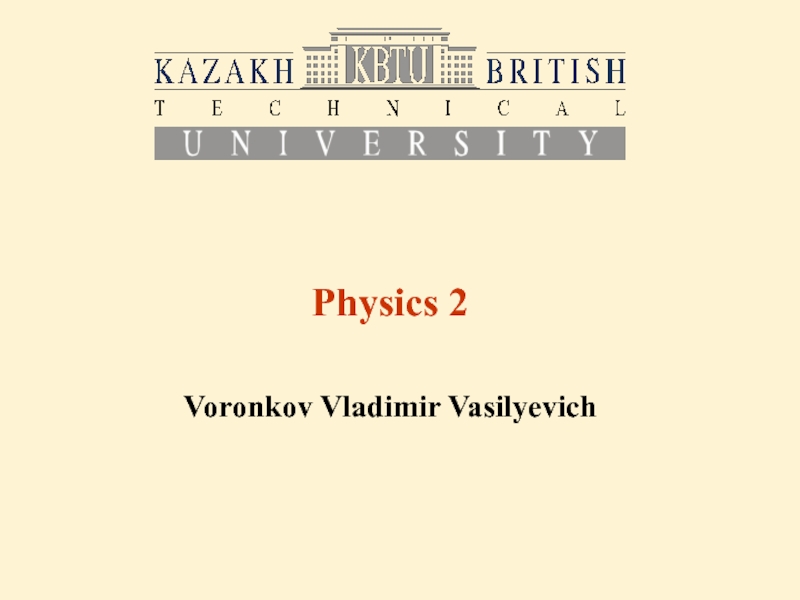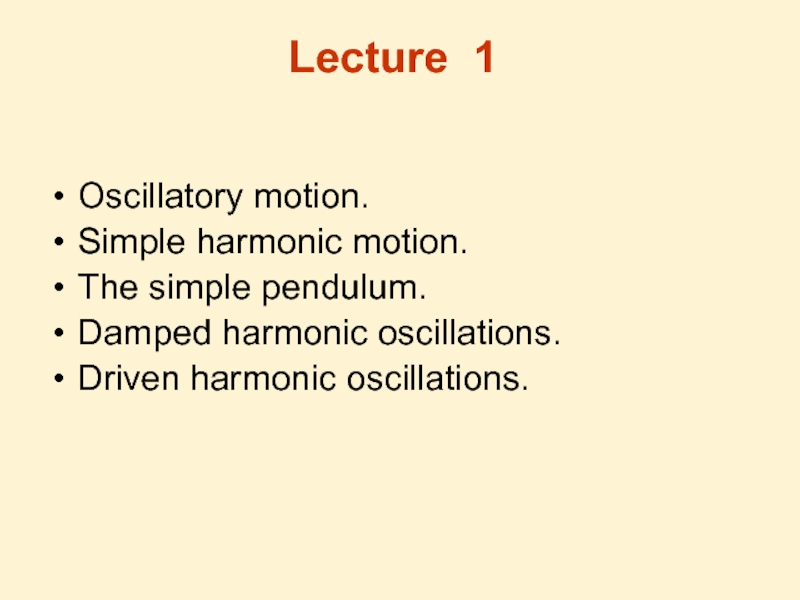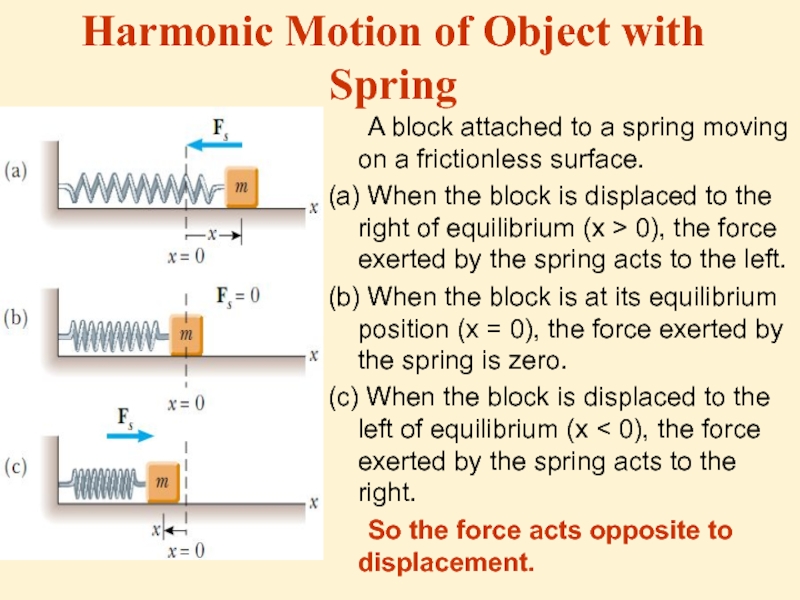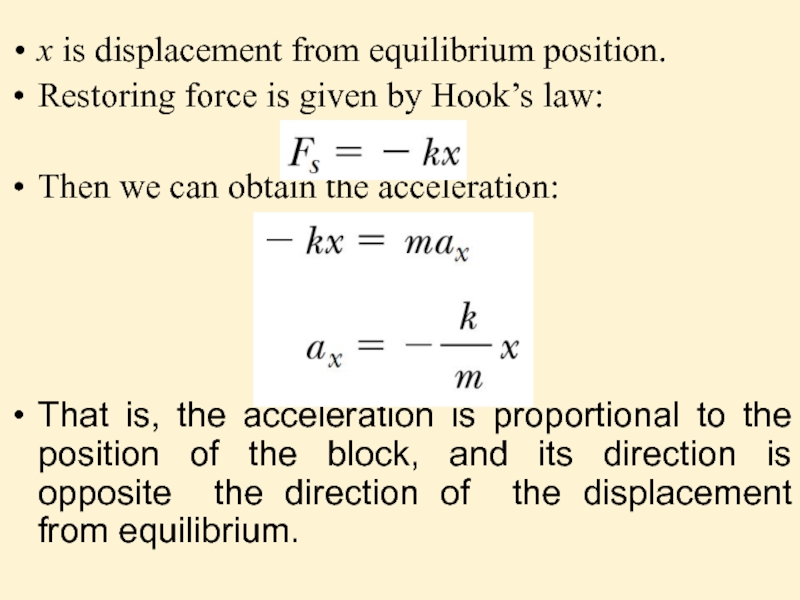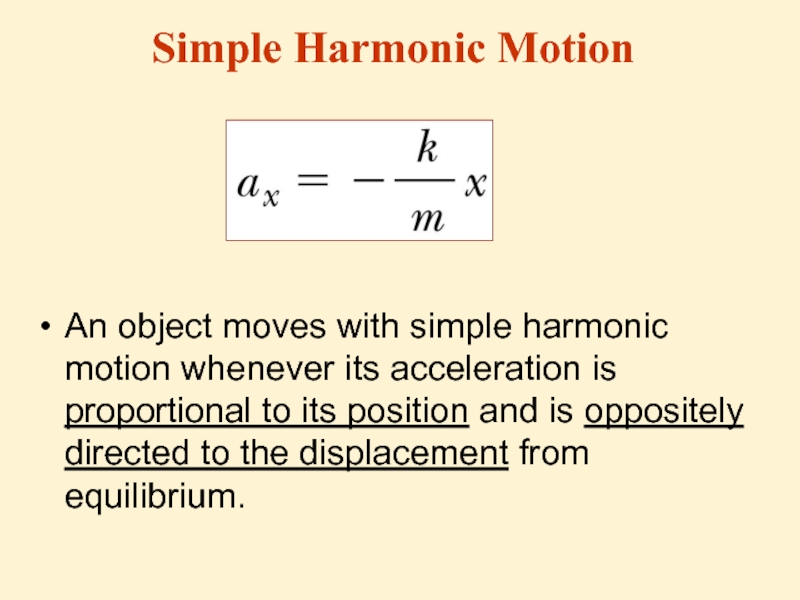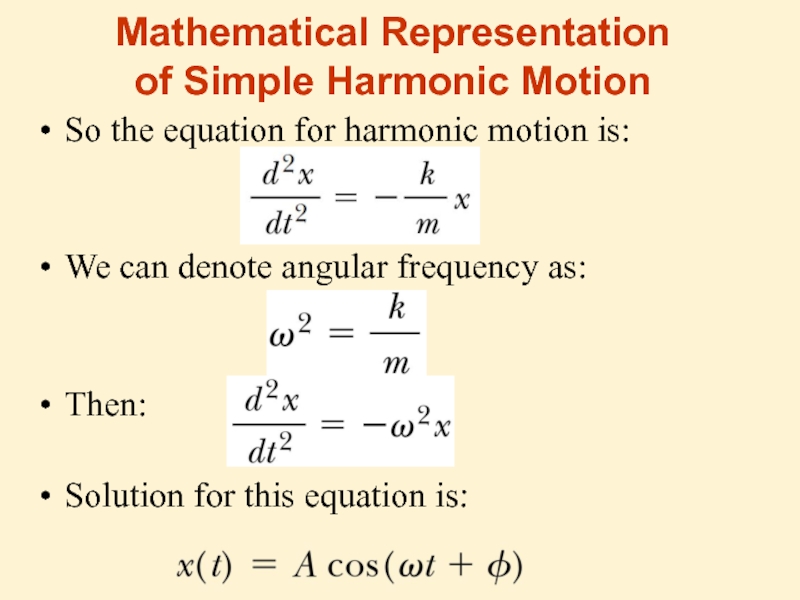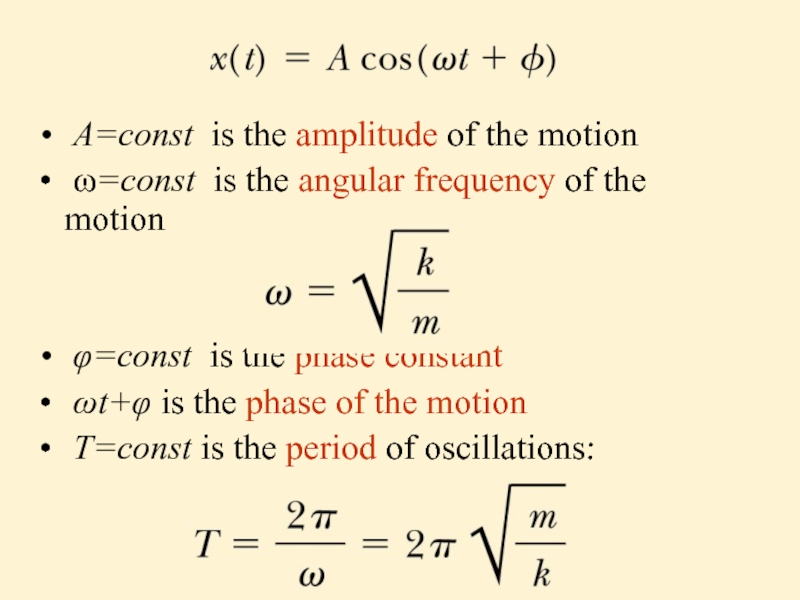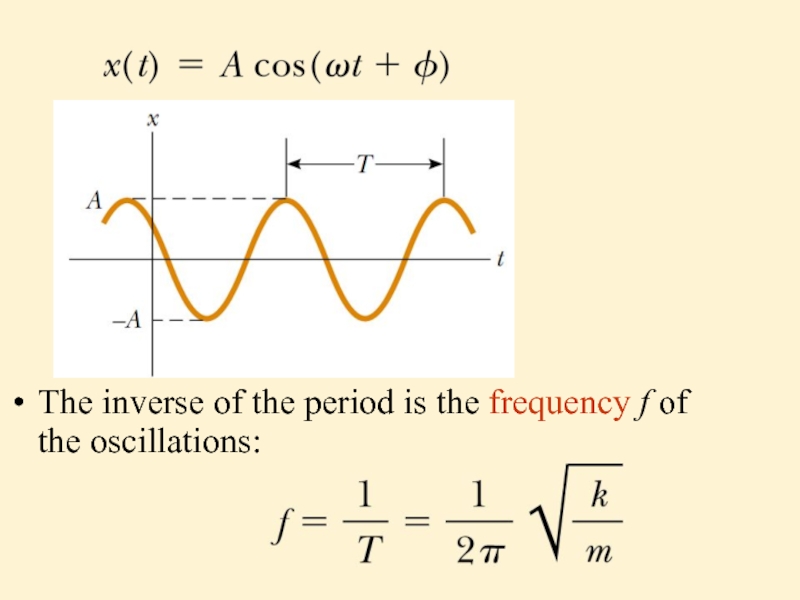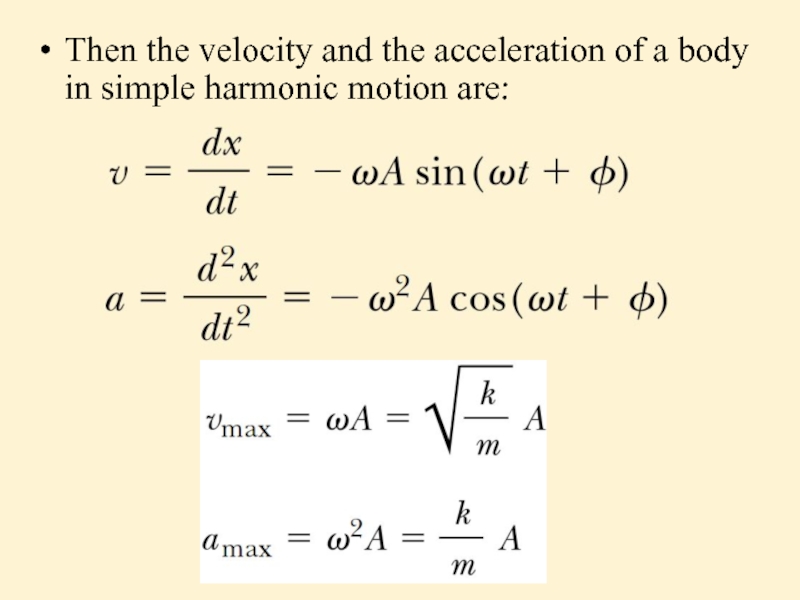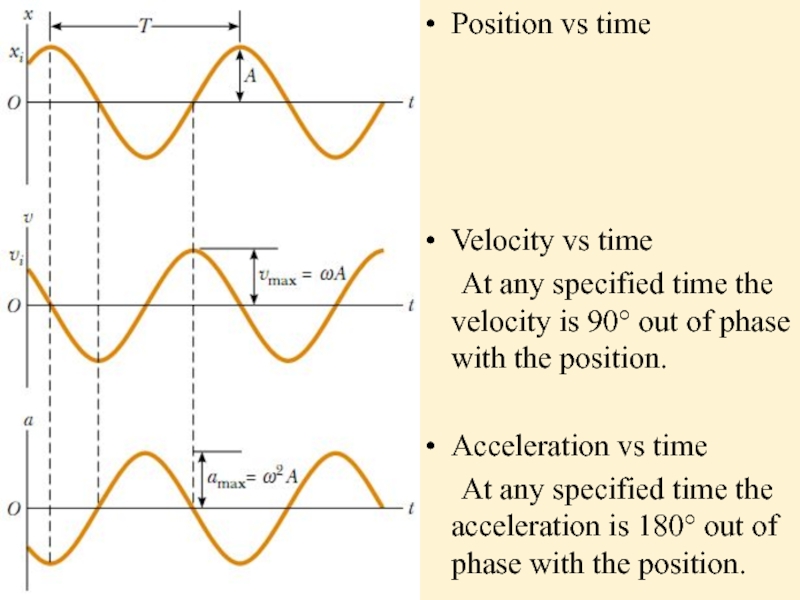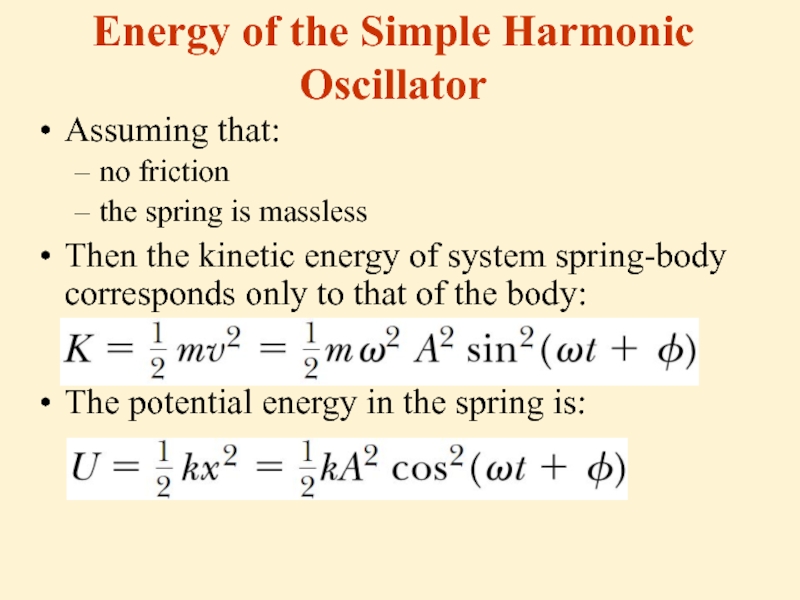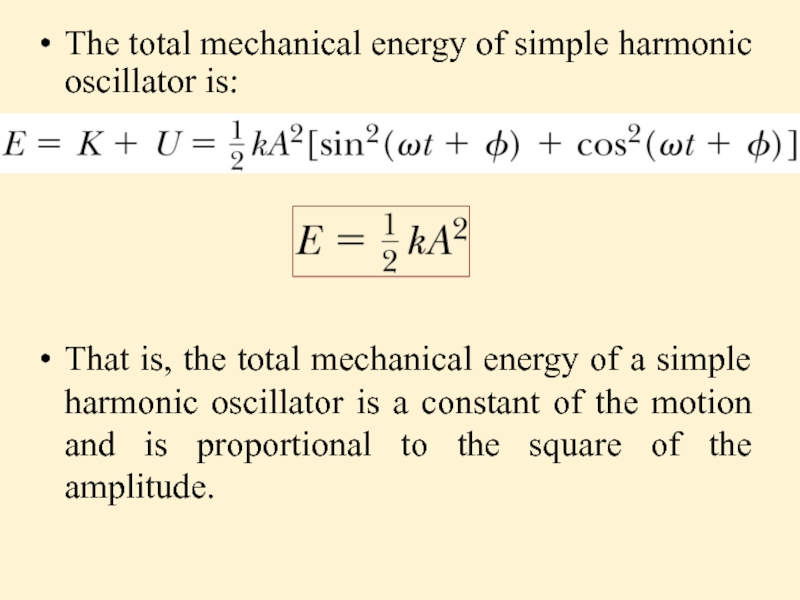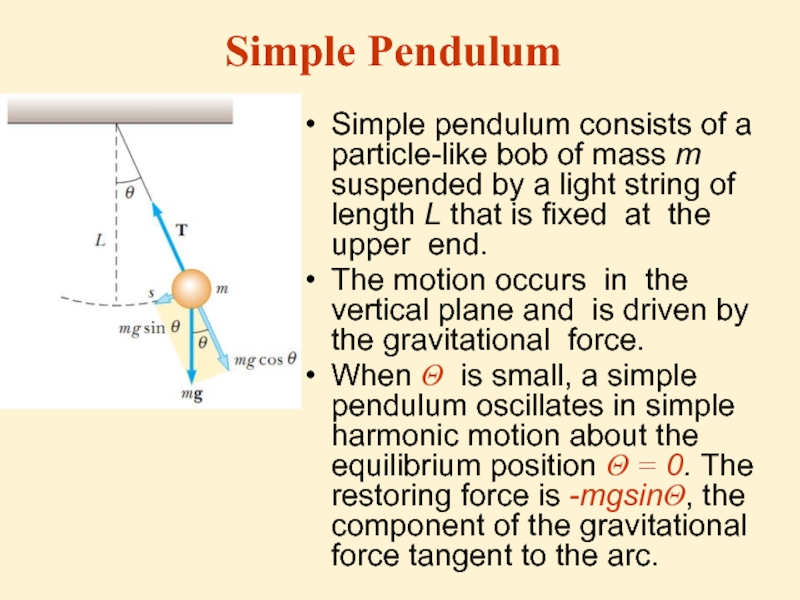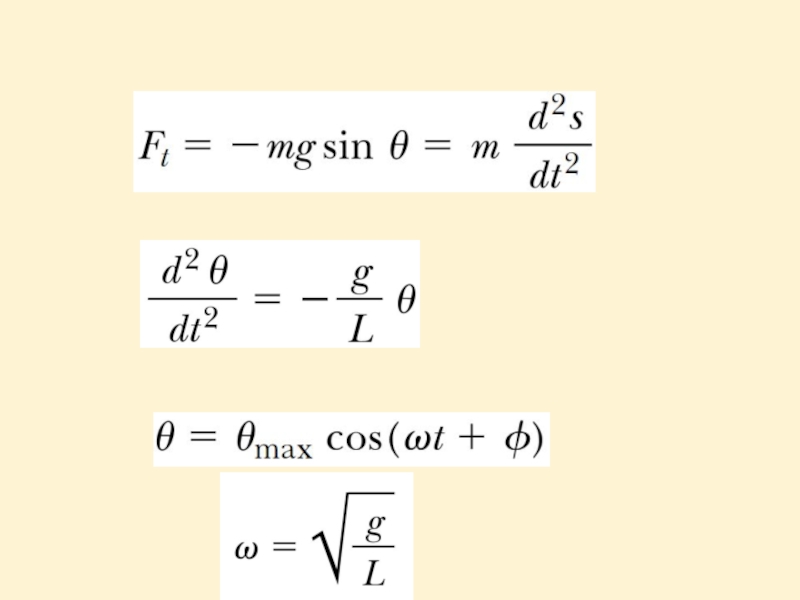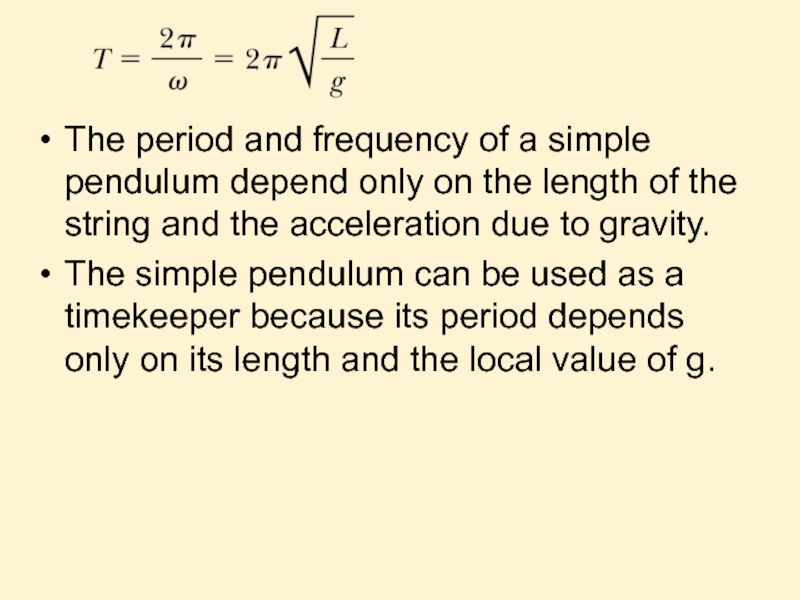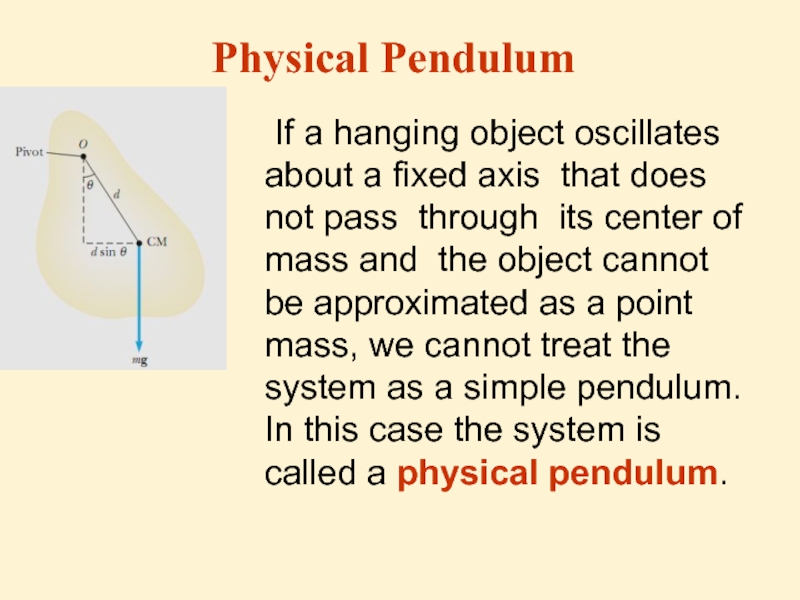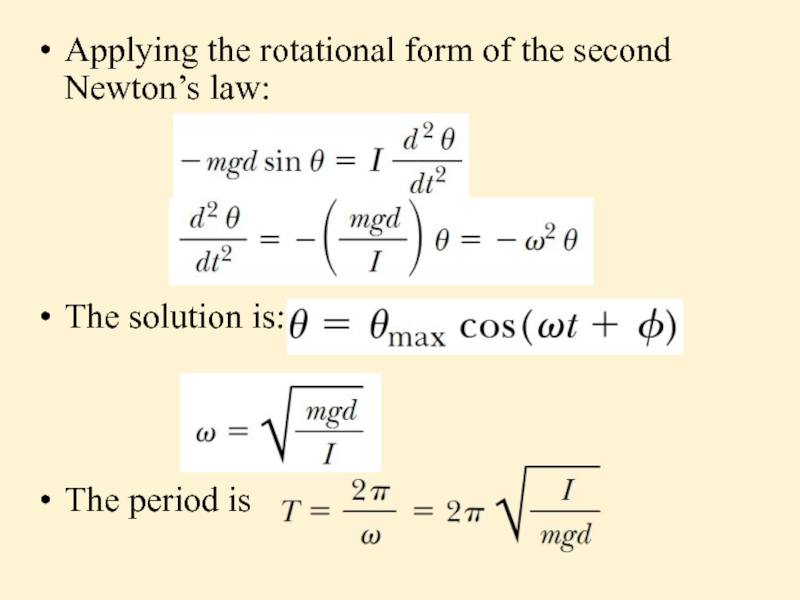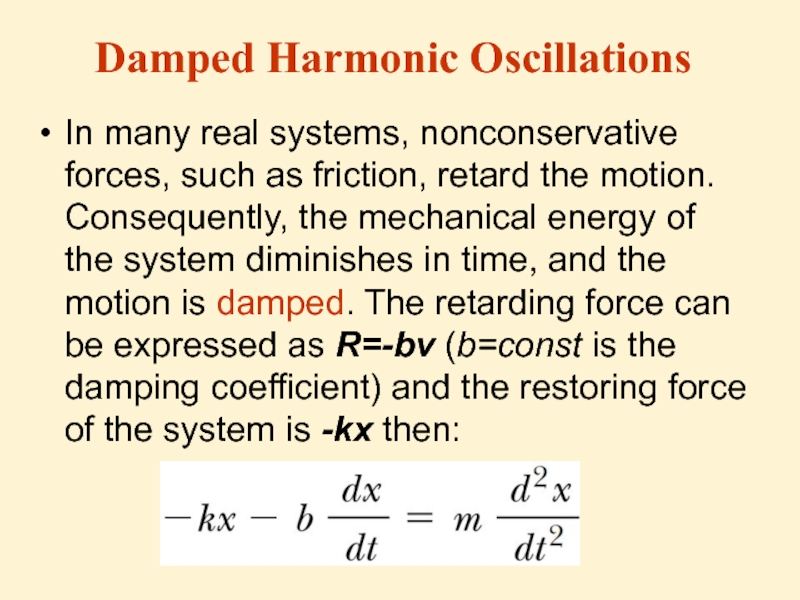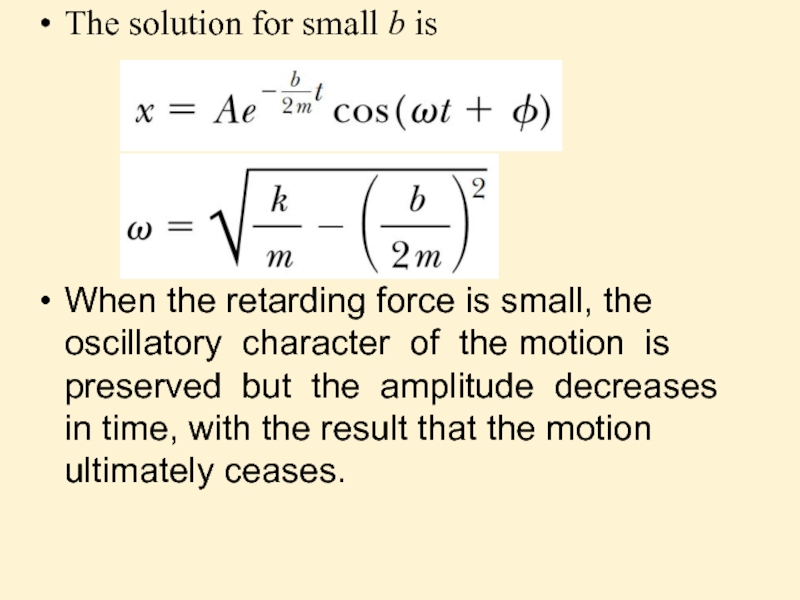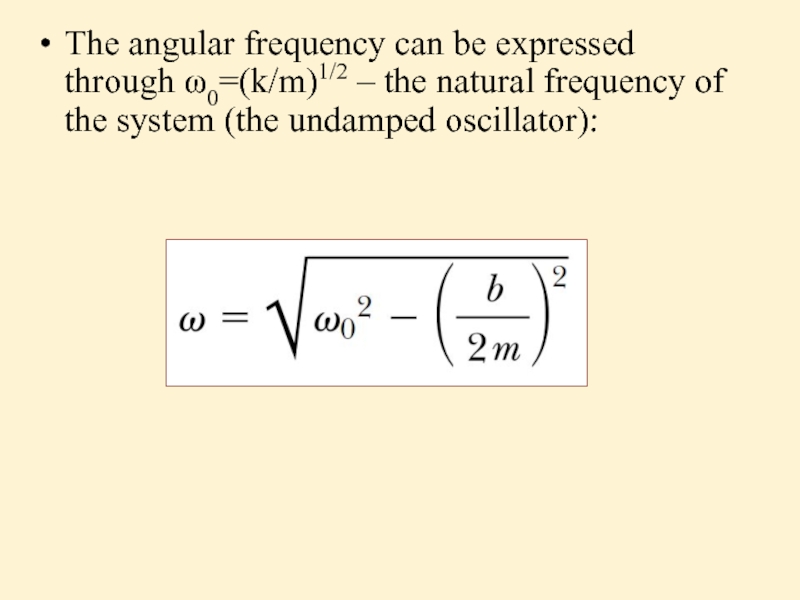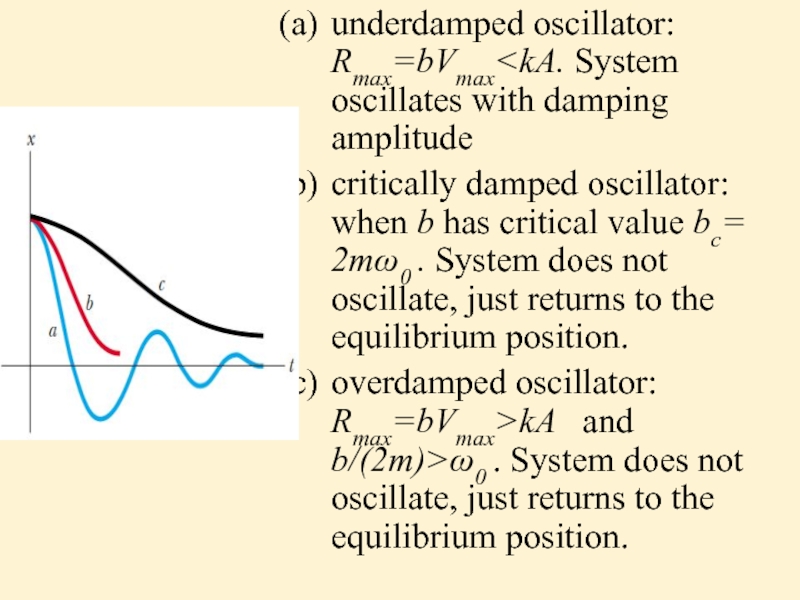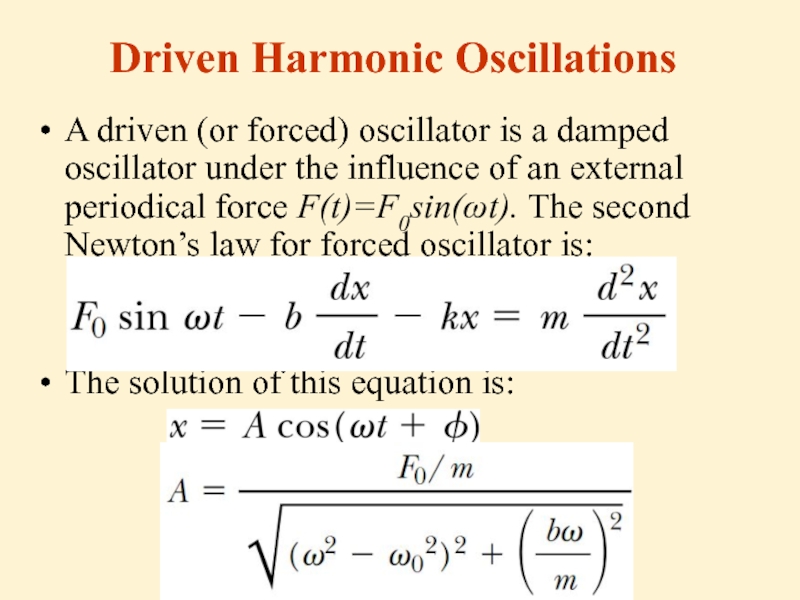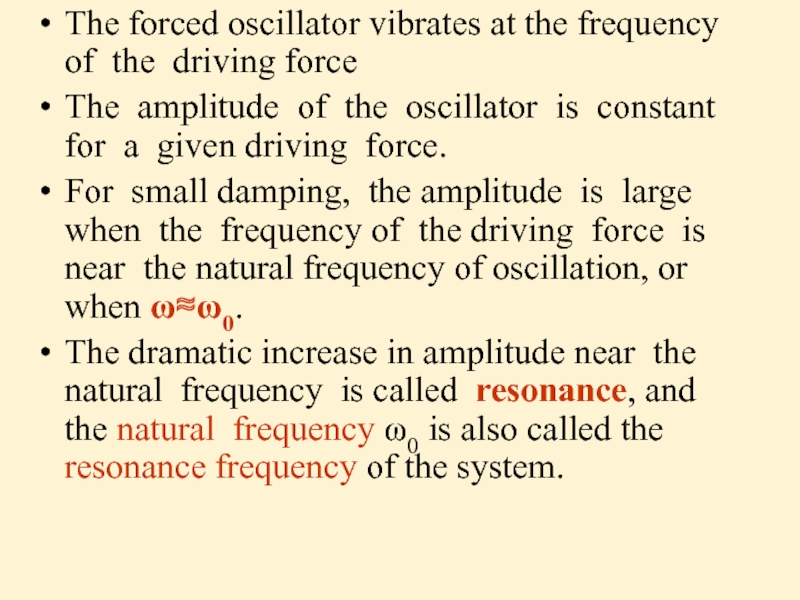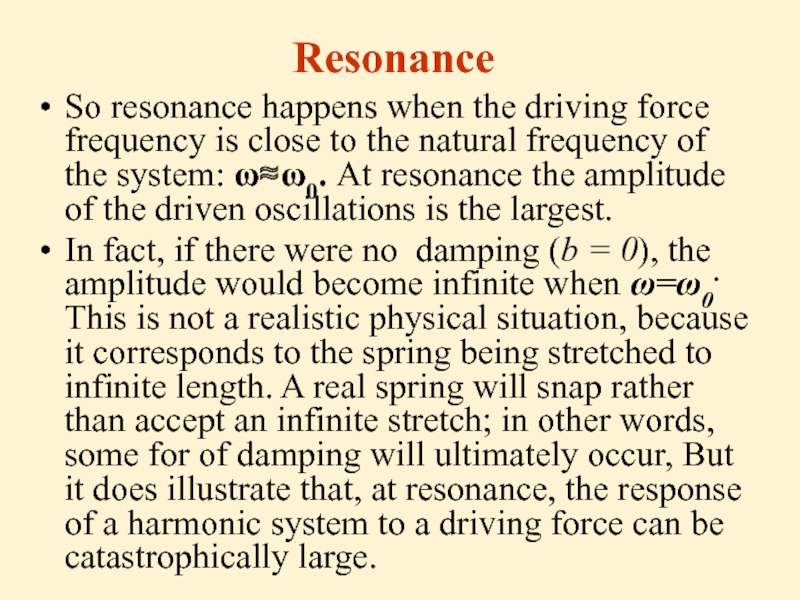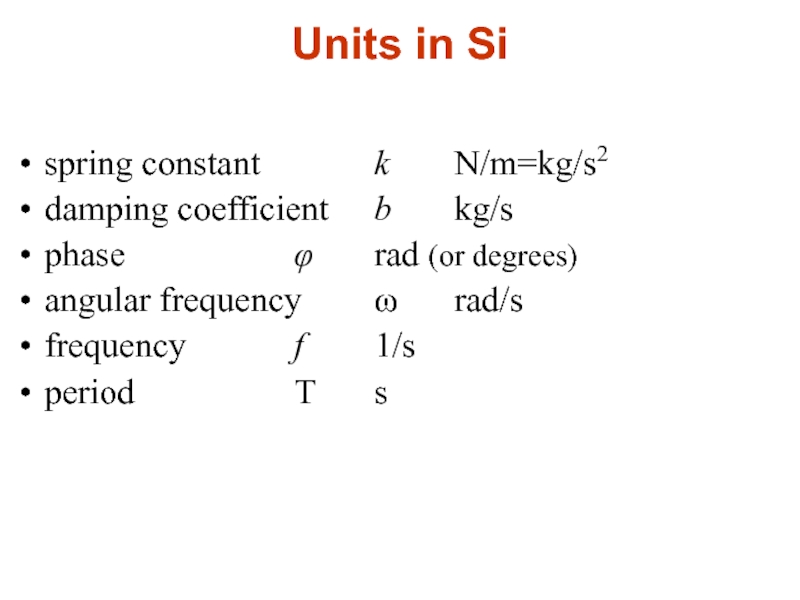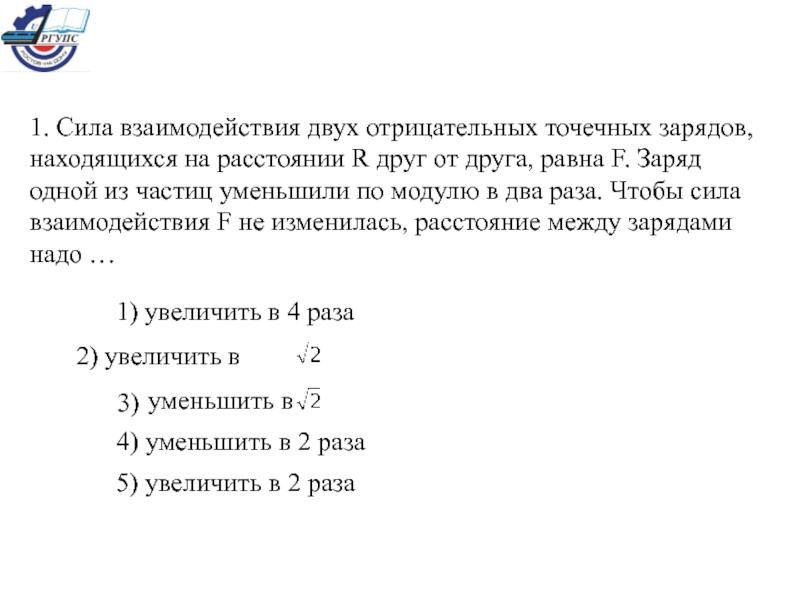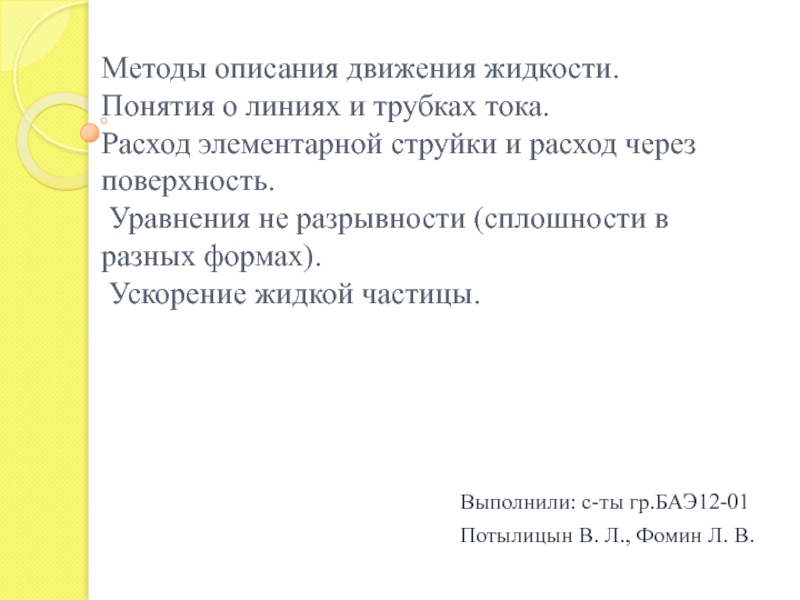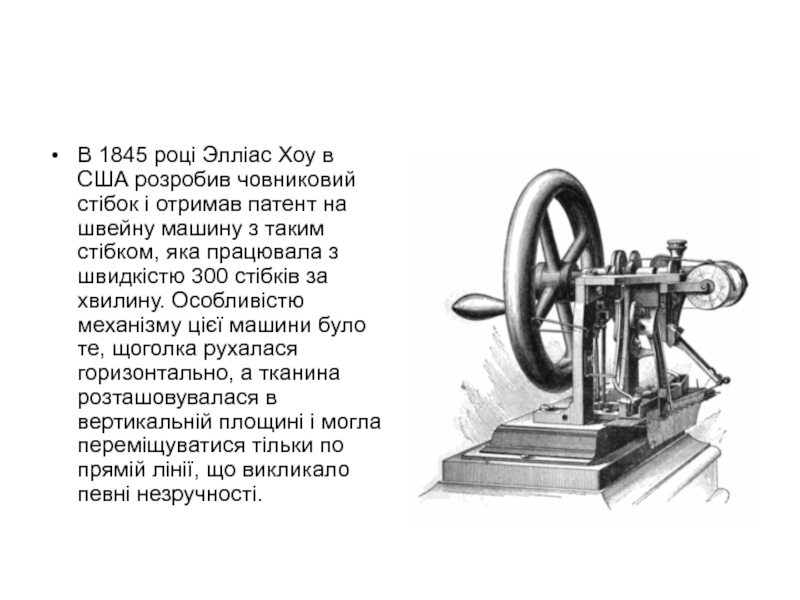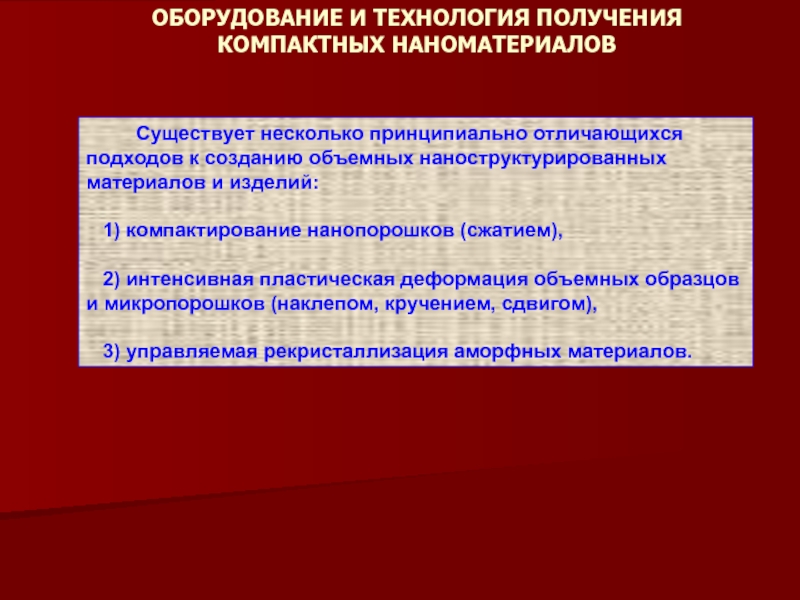- Главная
- Разное
- Дизайн
- Бизнес и предпринимательство
- Аналитика
- Образование
- Развлечения
- Красота и здоровье
- Финансы
- Государство
- Путешествия
- Спорт
- Недвижимость
- Армия
- Графика
- Культурология
- Еда и кулинария
- Лингвистика
- Английский язык
- Астрономия
- Алгебра
- Биология
- География
- Детские презентации
- Информатика
- История
- Литература
- Маркетинг
- Математика
- Медицина
- Менеджмент
- Музыка
- МХК
- Немецкий язык
- ОБЖ
- Обществознание
- Окружающий мир
- Педагогика
- Русский язык
- Технология
- Физика
- Философия
- Химия
- Шаблоны, картинки для презентаций
- Экология
- Экономика
- Юриспруденция
Oscillatory motion. The simple pendulum. (Lecture 1) презентация
Содержание
- 1. Oscillatory motion. The simple pendulum. (Lecture 1)
- 2. Lecture 1 Oscillatory motion. Simple harmonic
- 3. Harmonic Motion of Object with Spring A
- 4. x is displacement from equilibrium position. Restoring
- 5. Simple Harmonic Motion An object moves with
- 6. Mathematical Representation of Simple Harmonic Motion
- 7. A=const is the amplitude
- 9. Then the velocity and the acceleration of a body in simple harmonic motion are:
- 10. Position vs time
- 11. Energy of the Simple Harmonic Oscillator Assuming
- 12. The total mechanical energy of simple harmonic
- 13. Simple Pendulum Simple pendulum consists of a
- 15. The period and frequency of a simple
- 16. Physical Pendulum If a hanging object oscillates
- 17. Applying the rotational form of the second
- 18. Damped Harmonic Oscillations In many real systems,
- 19. The solution for small b is
- 20. The angular frequency can be expressed through
- 21. underdamped oscillator: Rmax=bVmaxkA and b/(2m)>ω0 .
- 22. Driven Harmonic Oscillations A driven (or forced)
- 23. The forced oscillator vibrates at the frequency
- 24. Resonance So resonance happens when the driving
- 25. Units in Si spring constant
Слайд 2Lecture 1
Oscillatory motion.
Simple harmonic motion.
The simple pendulum.
Damped harmonic
oscillations.
Driven harmonic oscillations.
Driven harmonic oscillations.
Слайд 3Harmonic Motion of Object with Spring
A block attached to a spring
moving on a frictionless surface.
(a) When the block is displaced to the right of equilibrium (x > 0), the force exerted by the spring acts to the left.
(b) When the block is at its equilibrium position (x = 0), the force exerted by the spring is zero.
(c) When the block is displaced to the left of equilibrium (x < 0), the force exerted by the spring acts to the right.
So the force acts opposite to displacement.
(a) When the block is displaced to the right of equilibrium (x > 0), the force exerted by the spring acts to the left.
(b) When the block is at its equilibrium position (x = 0), the force exerted by the spring is zero.
(c) When the block is displaced to the left of equilibrium (x < 0), the force exerted by the spring acts to the right.
So the force acts opposite to displacement.
Слайд 4x is displacement from equilibrium position.
Restoring force is given by Hook’s
law:
Then we can obtain the acceleration:
That is, the acceleration is proportional to the position of the block, and its direction is opposite the direction of the displacement from equilibrium.
Then we can obtain the acceleration:
That is, the acceleration is proportional to the position of the block, and its direction is opposite the direction of the displacement from equilibrium.
Слайд 5Simple Harmonic Motion
An object moves with simple harmonic motion whenever its
acceleration is proportional to its position and is oppositely directed to the displacement from equilibrium.
Слайд 6Mathematical Representation
of Simple Harmonic Motion
So the equation for harmonic motion
is:
We can denote angular frequency as:
Then:
Solution for this equation is:
We can denote angular frequency as:
Then:
Solution for this equation is:
Слайд 7
A=const is the amplitude of the motion
ω=const is the
angular frequency of the motion
φ=const is the phase constant
ωt+φ is the phase of the motion
T=const is the period of oscillations:
φ=const is the phase constant
ωt+φ is the phase of the motion
T=const is the period of oscillations:
Слайд 10Position vs time
Velocity vs time
At any specified time the velocity is
90° out of phase with the position.
Acceleration vs time
At any specified time the acceleration is 180° out of phase with the position.
Acceleration vs time
At any specified time the acceleration is 180° out of phase with the position.
Слайд 11Energy of the Simple Harmonic Oscillator
Assuming that:
no friction
the spring is massless
Then
the kinetic energy of system spring-body corresponds only to that of the body:
The potential energy in the spring is:
The potential energy in the spring is:
Слайд 12The total mechanical energy of simple harmonic oscillator is:
That is, the
total mechanical energy of a simple harmonic oscillator is a constant of the motion and is proportional to the square of the amplitude.
Слайд 13Simple Pendulum
Simple pendulum consists of a particle-like bob of mass m
suspended by a light string of length L that is fixed at the upper end.
The motion occurs in the vertical plane and is driven by the gravitational force.
When Θ is small, a simple pendulum oscillates in simple harmonic motion about the equilibrium position Θ = 0. The restoring force is -mgsinΘ, the component of the gravitational force tangent to the arc.
The motion occurs in the vertical plane and is driven by the gravitational force.
When Θ is small, a simple pendulum oscillates in simple harmonic motion about the equilibrium position Θ = 0. The restoring force is -mgsinΘ, the component of the gravitational force tangent to the arc.
Слайд 15The period and frequency of a simple pendulum depend only on
the length of the string and the acceleration due to gravity.
The simple pendulum can be used as a timekeeper because its period depends only on its length and the local value of g.
The simple pendulum can be used as a timekeeper because its period depends only on its length and the local value of g.
Слайд 16Physical Pendulum
If a hanging object oscillates about a fixed axis that
does not pass through its center of mass and the object cannot be approximated as a point mass, we cannot treat the system as a simple pendulum. In this case the system is called a physical pendulum.
Слайд 18Damped Harmonic Oscillations
In many real systems, nonconservative forces, such as friction,
retard the motion. Consequently, the mechanical energy of the system diminishes in time, and the motion is damped. The retarding force can be expressed as R=-bv (b=const is the damping coefficient) and the restoring force of the system is -kx then:
Слайд 19The solution for small b is
When the retarding force is small,
the oscillatory character of the motion is preserved but the amplitude decreases in time, with the result that the motion ultimately ceases.
Слайд 20The angular frequency can be expressed through ω0=(k/m)1/2 – the natural
frequency of the system (the undamped oscillator):
Слайд 21underdamped oscillator: Rmax=bVmax
b has critical value bc= 2mω0 . System does not oscillate, just returns to the equilibrium position.
overdamped oscillator: Rmax=bVmax>kA and b/(2m)>ω0 . System does not oscillate, just returns to the equilibrium position.
overdamped oscillator: Rmax=bVmax>kA and b/(2m)>ω0 . System does not oscillate, just returns to the equilibrium position.
Слайд 22Driven Harmonic Oscillations
A driven (or forced) oscillator is a damped oscillator
under the influence of an external periodical force F(t)=F0sin(ωt). The second Newton’s law for forced oscillator is:
The solution of this equation is:
The solution of this equation is:
Слайд 23The forced oscillator vibrates at the frequency of the driving force
The
amplitude of the oscillator is constant for a given driving force.
For small damping, the amplitude is large when the frequency of the driving force is near the natural frequency of oscillation, or when ω≈ω0.
The dramatic increase in amplitude near the natural frequency is called resonance, and the natural frequency ω0 is also called the resonance frequency of the system.
For small damping, the amplitude is large when the frequency of the driving force is near the natural frequency of oscillation, or when ω≈ω0.
The dramatic increase in amplitude near the natural frequency is called resonance, and the natural frequency ω0 is also called the resonance frequency of the system.
Слайд 24Resonance
So resonance happens when the driving force frequency is close to
the natural frequency of the system: ω≈ω0. At resonance the amplitude of the driven oscillations is the largest.
In fact, if there were no damping (b = 0), the amplitude would become infinite when ω=ω0. This is not a realistic physical situation, because it corresponds to the spring being stretched to infinite length. A real spring will snap rather than accept an infinite stretch; in other words, some for of damping will ultimately occur, But it does illustrate that, at resonance, the response of a harmonic system to a driving force can be catastrophically large.
In fact, if there were no damping (b = 0), the amplitude would become infinite when ω=ω0. This is not a realistic physical situation, because it corresponds to the spring being stretched to infinite length. A real spring will snap rather than accept an infinite stretch; in other words, some for of damping will ultimately occur, But it does illustrate that, at resonance, the response of a harmonic system to a driving force can be catastrophically large.
Слайд 25Units in Si
spring constant k N/m=kg/s2
damping coefficient b kg/s
phase φ rad (or degrees)
angular
frequency ω rad/s
frequency f 1/s
period T s
frequency f 1/s
period T s
